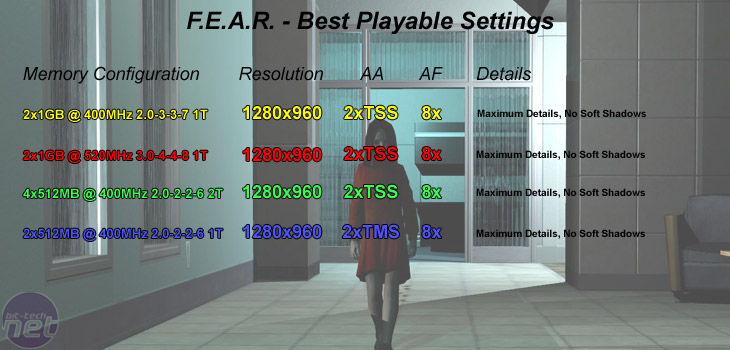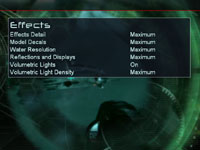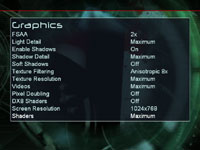F.E.A.R.
Publisher: VU GamesWe used the full retail version of F.E.A.R. patched to version 1.02. The game makes use of a lot of effects - including soft shadows, volumetric lighting, parallax mapping and particle effects, along with a slow-motion mode that really taxes today's systems. There's extensive use of high resolution textures. The walls are both bump mapped and parallax mapped to give a realistic feel to the brick walls that are a big feature of this title. Also, the world is incredibly destructible, which is made more realistic by parallax mapping.
In general, this is a graphically intense game and the most outstanding part of the graphics engine is undoubtedly the player character's shadow that is cast on the wall.
It also has the most advanced A.I. that we have ever seen in a game engine to date - there are times when you'll find yourself with your pants down around your ankles with no where to go. For anyone who hasn't bought this game yet, we highly recommend you do - check out our full review here.
We did a manual run-through from the "Heavy Resistance" level, between two save game checkpoints - it was a section of intense outdoor gameplay that lasted around three and a half minutes. We recorded frame over time graphs for all of our manual run-throughs because we found that the SloMo mode dropped our frame rates in to the low teens. We suspect this drop is part of Monolith's technique for slowing down the gameplay, as the game was not as jerky as the frame rate suggests.
Anti-Aliasing and Anisotropic Filtering were controlled from inside the game, and thus drivers were left set to "Application Controlled".
Below is a table of the best-playable settings that we found best for each memory configuration. We decided that a minimum frame rate of around 15 frames per second and an average of over 40 frames per second would deliver a good gaming experience throughout the rest of the title.


With four 512MB modules running at 400MHz with the slower 2T command rate, the average frame rate and minimum frame rate were slower, but the game remained playable at the same settings.
You would be pushed to notice the difference between the three 2GB memory configurations in a blind taste test in this title.
However, things were slightly different with the 1GB configuration, as we found that we had to lower the transparency antialiasing detail slightly. The average frame rate at 1280x960 2xTSS AA 8xAF was the same as what we experienced with the three 2GB configurations, but the minimum frame rate was not high enough to experience smooth gameplay at a mere 9 frames per second. There were also several times when the frame rate dropped below our 15 fps threshold too. The gaming experience was greatly improved by dropping the transparency antialiasing quality down to transparency multisampled AA.

MSI MPG Velox 100R Chassis Review
October 14 2021 | 15:04













Want to comment? Please log in.